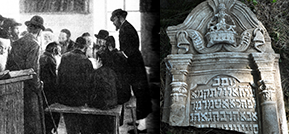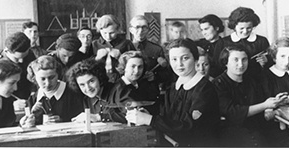Zabolotiv
Name in Ukrainian:
Zabolotiv [Заболотiв]
Name in Polish:
Zabłotów
Name in German:
Sabolotiw
Name in Russian:
Заболотов [Zabolotov]
Name in Hebrew:
זאבלוטוב
Name in Yiddish:
זאַבלאטאוו
Historical-cultural region:
Eastern Galicia - Prikarpattia
Administrative District :
Ivano-Frankivsk District
Administrative History:
| Years | State | Province | District |
| Untill 1772 | Polish-Lithuanian Commonwealth: Kingdom of Poland |
Rus Voivodship (Województwo ruskie) Ziemia halicka |
Stanislawów starostwo;Sniatyn powiat |
| 1772-1918 | "Hapsburg Empire", since 1804 - Austrian Empire, since 1867 - Austro-Hungarian Monarchy |
Kingdom of Galicia and Lodomeria (Königreich Galizien und Lodomerien) |
Sniatyn powiat, Galicia |
| 1914-1915 | Under Russian occupation | General-Government Galitsiia | |
| 1915-1918 | Austro-Hungarian Monarchy |
Kingdom of Galicia and Lodomeria (Königreich Galizien und Lodomerien) |
|
| 1918 - May 1919 | West-Ukrainian People's Republic | ||
| May 1919 - September 1939 | Republic of Poland | Stanislawów wojewódstwo | Sniatyn powiat |
| September 1939 - June 1941 | USSR: Ukrainian Soviet Socialist Republic | Stanislav oblast' | |
| June 1941 - July 1944 | Under German occupation: General Government (Das Generalgouvernement für die besetzten polnischen Gebiete | Distrikt Galizien | Stanislau Kreishauptmannschaft |
| 1944-91 | USSR: Ukrainian Soviet Socialist Republic | Stanislavov (Stanislaviv) oblast'; since 1962 renamed Ivano-Frankovsk (Ivano-Frankivs'k) oblast' | |
| Since 1991 | Republic of Ukraine | Ivano-Frankivs'k oblast' | Снятинський р-н |
Population Data:
| Year | Total | Jews | Percentage of Jews |
| 1765 | ? | 986 | - |
| 1870s | |||
| 1880 | 3,523 | 1,730 | 49.10% |
| 1890 | 4,054 | 2,009 | 49.55% |
| 1900 | 4,232 | 2,092 | 49.43% |
| 1910 | 4,758 | 2,171 | 45.62% |
| 1921 | 3,583 | 1,454 | 40.58% |
| 1931 | ? | 1,700 | |
| 2001 | 4,129 |
Items relevant to the community
| Title | Type of item | Years |
|---|---|---|
| "Arkusze ewidencyjne" i wykazy Zarządów stowarz... | CAHJP Cards | 1930 |
| "Arkusze ewidencyjne" i wykazy Zarządów stowarz... | CAHJP Cards | 1930 |
| "Arkusze ewidencyjne" i wykazy Zarządów towarzy... | CAHJP Cards | 1930 |
| "Arkusze ewidencyjne" stowarzyszeń żydowskich w... | CAHJP Cards | 1924 |
| "Budżet gminy żydowskej w Zabłotowie na r. 1932". | CAHJP Cards | 1931 |
| "Budżet gminy żydowskej w Zabłotowie na r. 1934... | CAHJP Cards | 1934 |
| "Indeks duplikatu księgi zaślubin z r.1937 izra... | CAHJP Cards | 1937 |
| "Indeks duplikatu księgi zmarłych z r.1937 izra... | CAHJP Cards | 1937 |
| "Indeks i duplikat Księgi zaślubin izraelickie... | CAHJP Cards | 1937 |
| "Indeks i duplikat Księgi zmarłych izraelickieg... | CAHJP Cards | 1937 |






